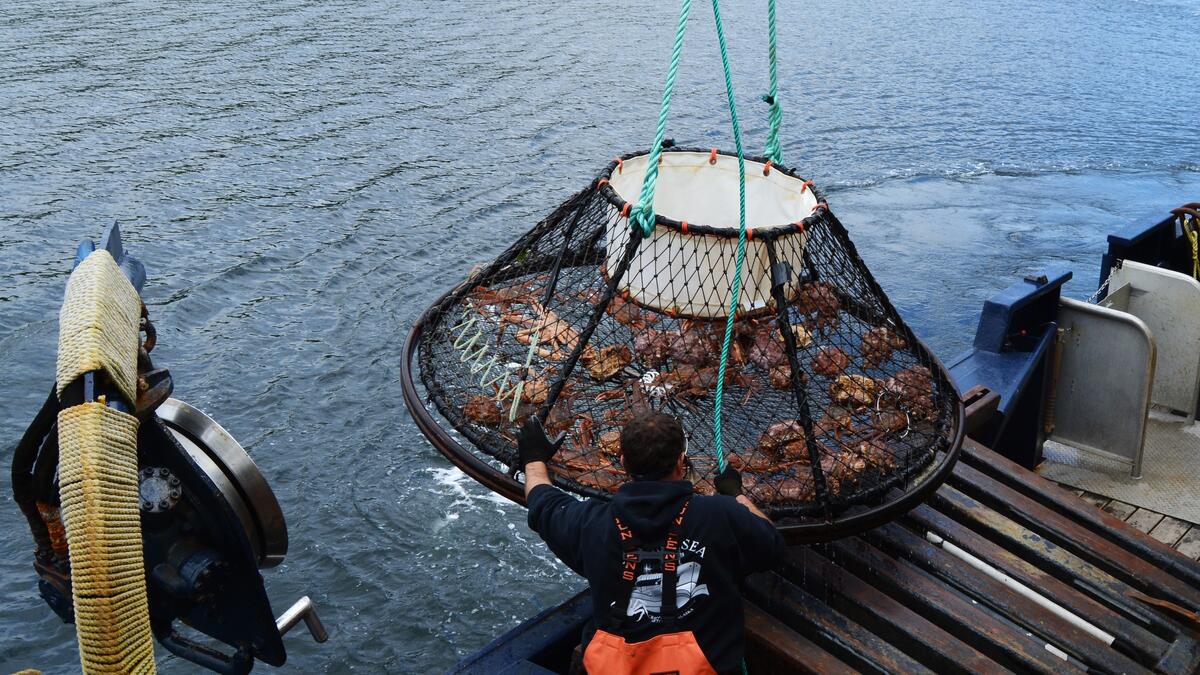
The United Indian

The rhythmic lapping of waves against the shore, the salty kiss of the sea breeze, and the vibrant hues of marine life – these are the wonders of our oceans. The world's oceans are not just vast bodies of water; they are the lifeblood of our planet, supporting intricate ecosystems and providing sustenance for billions of people. But beneath the surface, a silent crisis looms. Overfishing, habitat destruction, and pollution threaten to unravel the delicate balance of our marine ecosystems.
According to the United Nations Food and Agriculture Organization (FAO), approximately 34.2% of global fish stocks are already overexploited, with an additional 60% fished at the maximum sustainable level. Another research showed that Fishers remove more than 77 billion kilograms (170 billion pounds) of wildlife from the sea each year. Scientists fear that continuing to fish at this rate may soon result in a collapse of the world’s fisheries. These comprehensive explorations delve into the importance of marine conservation, the transformative potential of sustainable fishing, and the global efforts to protect our precious marine resources.
Today on the occasion of World Fisheries Day, let's have a look at Sustainable Fishing, why it matters & the role of Blue Revolution through this blog.
World Fisheries Day: A Call to Action
Every year, World Fisheries Day is celebrated on November 21st to raise awareness about the importance of marine life. The day raises awareness about the various threats facing the world's fisheries, including overfishing, habitat destruction, and illegal fishing practices, while also advocating for the rights of small-scale fishers, who are often among the most marginalized and vulnerable groups worldwide.
Why Sustainable Fishing Matters?
Our oceans are the lifeblood of our planet, regulating climate, providing food, and supporting countless livelihoods. However, unsustainable fishing practices have led to the depletion of fish stocks, damage to marine habitats, and the loss of biodiversity. By adopting sustainable fishing methods, we can ensure there will be populations of ocean and freshwater wildlife for the future. Here are other important reasons why one must consider adapting sustainable fishing practices.
- Protect Marine Ecosystems: Sustainable fishing helps maintain the health and balance of marine ecosystems, supports the survival of various species and their habitats to ensure long-term marine resource availability.
- Ensure Food Security: By preserving fish stocks, we can guarantee a reliable source of protein for millions of people worldwide.
- Support Coastal Communities: The fishing industry supports the livelihoods of over 39 million people worldwide including the livelihoods of coastal communities that depend only on fishing for their income and food security.
- Mitigate Climate Change: Healthy marine ecosystems play a crucial role in carbon sequestration, helping to mitigate climate change.
Key Sustainable Fishing Practices
To preserve our marine ecosystems, we must adopt the following sustainable fishing practices:
- Practice Carbon-conscious Fishing : Cut down on the quantity of carbon emissions from your fishing vessel. To cut drag, replace your propeller with a new stainless steel one. In order to keep a close eye on fuel usage and determine the most energy-efficient cruising speed, you should also install an electric fuel meter. Follow the engine's recommended maintenance regimen as directed by the manufacturer. Additionally, learn to reduce the speed. Try surfboard fishing, which is completely driven by humans, if you're serious about being carbon neutral.
- Selective Fishing: Using fishing gear that targets specific species and minimizes bycatch, or the accidental capture of non-target species. For example opting for lead-free fishing gears to protect harm to the catch. You can also practice "Catch and Release, Unless you Hook an Invasive Species" to avoid excess.
- Size Limits: Implementing regulations that prohibit the harvesting of undersized fish to allow them to reach reproductive maturity.
- Catch Limits: Setting quotas to limit the amount of fish that can be caught in a specific area or time period. This can also include temporarily closing fisheries during breeding seasons to allow fish populations to reproduce.
5. Marine Protected Areas: Designating areas where fishing is restricted or prohibited to allow fish populations to recover and marine ecosystems to thrive.
6. Technological Innovations: Utilizing advanced fishing technologies that reduce bycatch and minimize environmental impact.
7. Community-Based Management: Empowering local communities to manage fisheries sustainably, ensuring equitable distribution of benefits and long-term sustainability.
8. Consumer Awareness: Educating consumers about sustainable seafood choices and encouraging them to support sustainable fisheries. People leave all sorts of junk behind on coastlines and in the water, and it causes pollution & problems for marine species. Thus there is a strong need to advocate cleanliness at the fishing points with concepts like “Pack Out With Everything You Pack In”.
The Role of the "Blue Revolution"
The Blue Revolution is a global movement to increase the production of fish and other aquatic products through aquaculture practices. It began in the 1980s and has had a significant impact on food security, nutrition, and rural livelihoods. The Blue Revolution also aims to: Modernize fisheries through new technologies, Generate employment and export earnings, Empower fishers and aquaculture farmers, and Ensure sustainability and environmental concerns.
In India, the Blue Revolution has led to a major improvement. Hiralal Chaudhuri and Arun Krishnan are considered the "Fathers of the Blue Revolution" in India. Chaudhuri was the architect of induced breeding and spawn production of the carp Cirrhinus reba in captivity. The Department of Animal Husbandry prepares an Integrated National Fisheries Action Plan (NFAP) to achieve the goals of the Blue Revolution. The government also takes other supportive measures, such as:
- Creating fishing infrastructure on rivers like the Ganga and Brahmaputra
- Building cold water fisheries, trout brooding facilities, and hatcheries in the Himalayan and North Eastern states
The Indian Fish Industry and Its Economic Significance
India, the world's 2nd largest producer of aquaculture and the 3rd largest producer of fish, understands the importance of the fisheries and aquaculture sectors. Thus it boasts a vast coastline and a thriving fishing industry that plays a significant role in the country's economy. Here are some statistics related to fishing industry in India that must be taken into account to understand the urge for Sustainable Fishing Practices in India
- Contributes approximately 1.07% to the country's GDP
- Provides employment to over 14.5 million fishers and fish farmers
- Generates annual export earnings of around ₹40,000 crores
- Supports millions of coastal and inland community livelihoods
The industry faces numerous challenges, including overfishing, pollution, and climate change. Sustainable fishing practices are essential to ensure the long-term sustainability of the Indian fishing industry and its contribution to the economy.
The Road Ahead
Sustainable fishing is not just a choice; it's an imperative. Together governments, industries, and individuals can create a future where our oceans thrive and provide for generations to come. Moreover, by embracing responsible practices, investing in technological innovations, and fostering community participation, India can lead the global conversation on marine conservation.
Remember, our oceans are not just resources; they are living, breathing ecosystems that sustain life on our planet. Every responsible action counts in preserving this delicate balance. So, let's embrace sustainable fishing practices and protect our marine ecosystems for the sake of our planet and its inhabitants.
Read more in Environment
May 27, 2025
TUI Staff
May 27, 2025
TUI Staff

Stay Tuned with The United Indian!
Our news blog is dedicated to sharing valuable and pertinent content for Indian citizens. Our blog news covering a wide range of categories including technology, environment, government & economy ensures that you stay informed about the topics that matter most. Follow The United Indian to never miss out on the latest trending news in India.
©The United Indian 2024
















